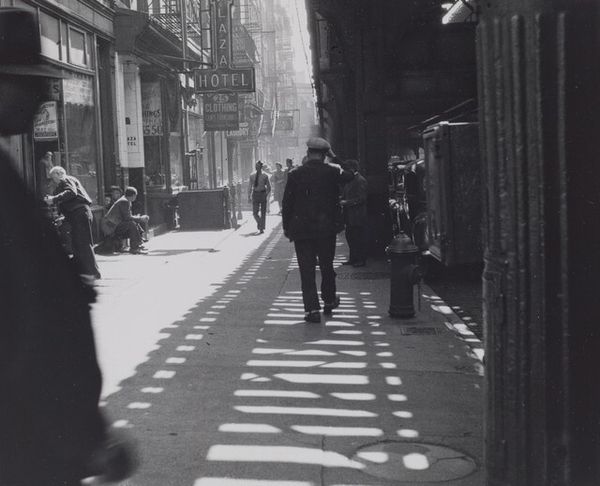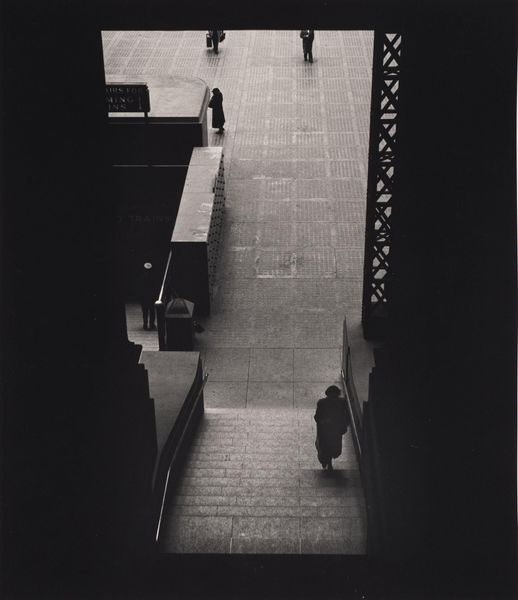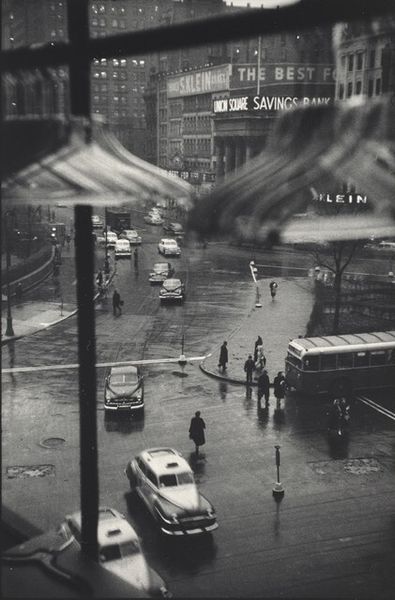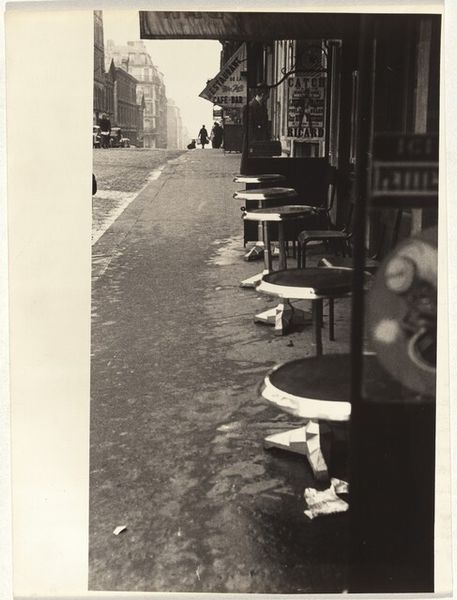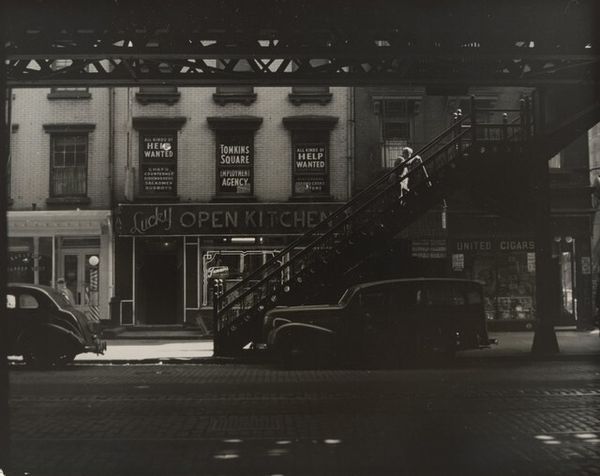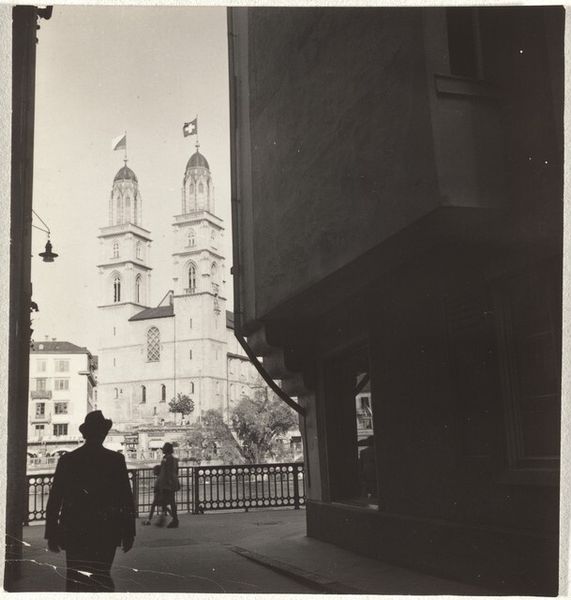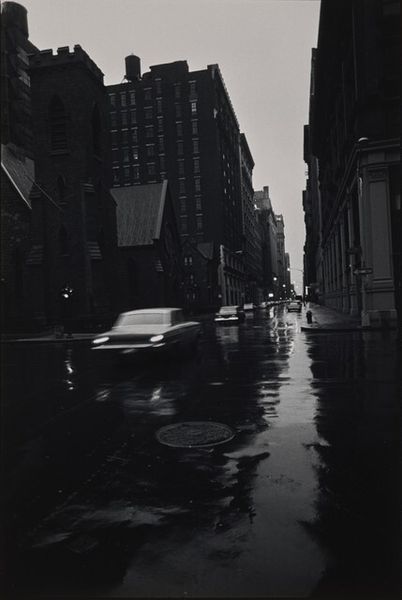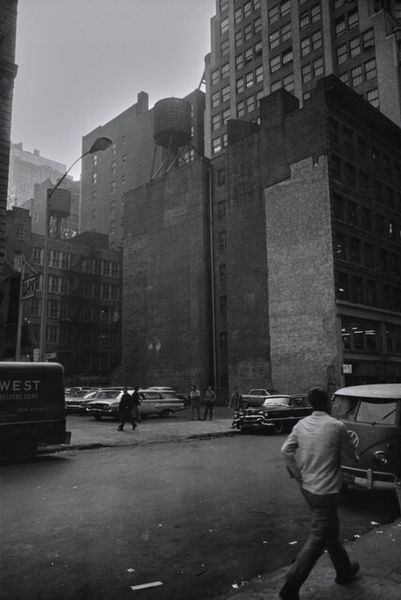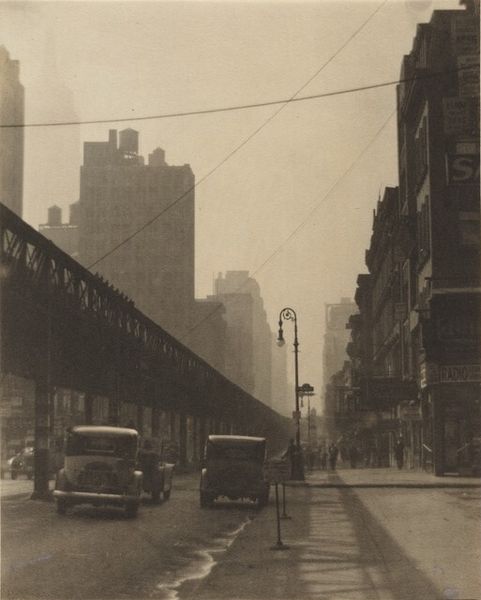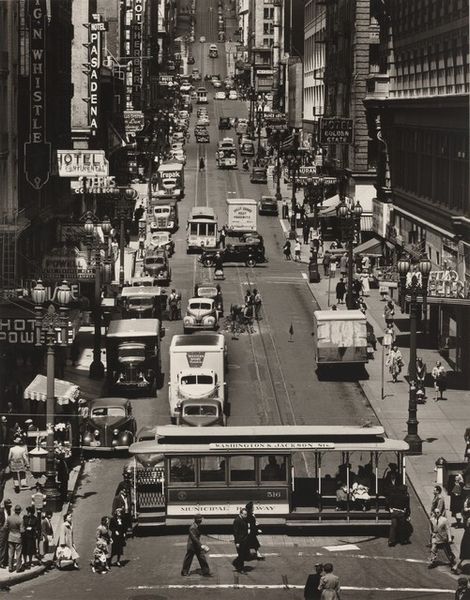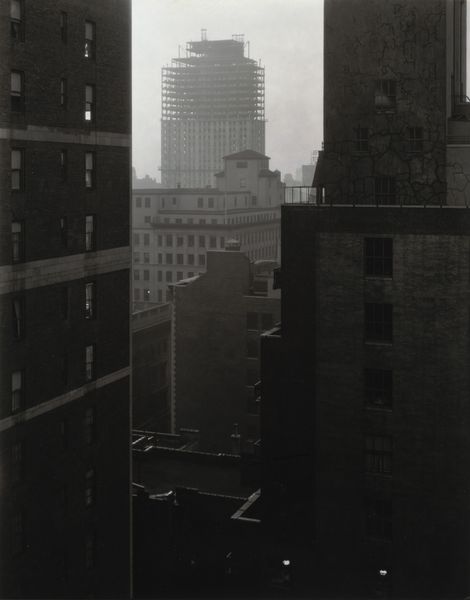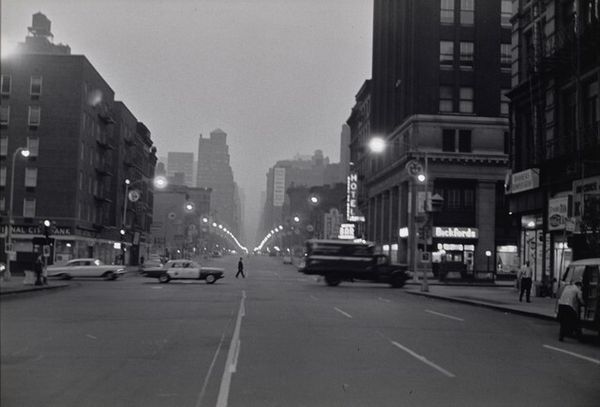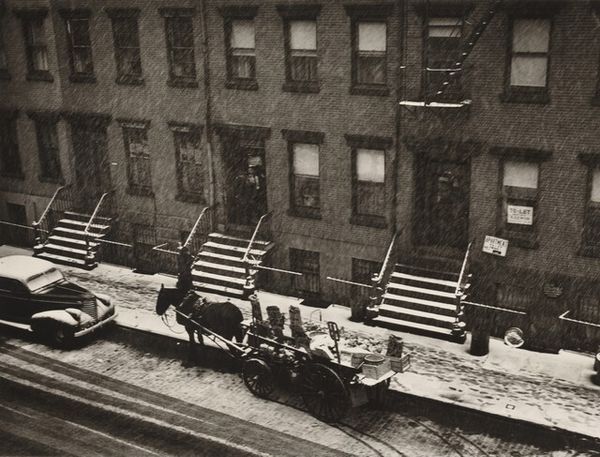
photography, gelatin-silver-print
#
black and white photography
#
harlem-renaissance
#
black and white format
#
street-photography
#
photography
#
black and white
#
gelatin-silver-print
#
street photography
#
cityscape
#
monochrome
#
realism
Dimensions: sheet: 50.5 × 41.1 cm (19 7/8 × 16 3/16 in.) image: 46.7 × 33.5 cm (18 3/8 × 13 3/16 in.)
Copyright: National Gallery of Art: CC0 1.0
Curator: This black and white photograph, "New York, New York. A Harlem street scene," was taken by Gordon Parks sometime after 1943. Editor: It strikes me as incredibly somber, even stark. The high contrast between light and shadow gives it an almost palpable feeling of loneliness, particularly around that solitary figure at the bottom of the stairs. Curator: Parks was deeply engaged in documenting the realities of Black life in America, often highlighting issues of poverty and discrimination. His lens served as a potent tool for social commentary, revealing the everyday struggles and resilience within these communities. We could even view that shadowed figure as a manifestation of the invisibility that marginalized people experience. Editor: The physical architecture also feels incredibly present. The weight of those buildings, the fire escapes, the heavy railings—they speak to the density of urban life, and the sheer effort it takes to navigate it. It's all rendered with an amazing level of detail in this gelatin silver print. Curator: Yes, consider that the "Harlem Renaissance" predates this photo, and this image then captures a different moment, when optimism may have waned and realities solidified under socioeconomic and political pressures. What can we read, then, into the cross looming over the street scene, the street sign obscured at a distance, the groups of individuals milling about on the street corner? Editor: It speaks of community, though maybe fractured, and a kind of stubborn persistence amidst difficult circumstances. Even the seemingly mundane—the texture of the pavement, the curve of a lamppost—they contribute to the lived experience embedded within this piece. Parks draws attention to the materials that surround this figure’s environment to emphasize, in ways, her condition. Curator: That tension between faith and lived realities seems quite potent here. Thanks to Parks’ commitment, a new generation can examine the narratives from his time. Editor: Definitely. This image makes us think about the sheer volume of material present in every corner of the city. I’ll need to process these visuals, no doubt.
Comments
No comments
Be the first to comment and join the conversation on the ultimate creative platform.
